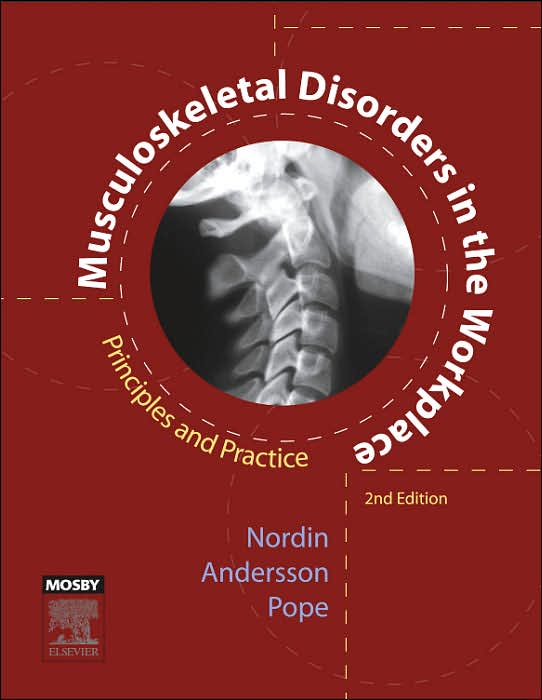Completely revised and updated, the 2nd Edition of this respected
reference covers both the theoretical background and the clinical
management뾞s well as the biomechanics and ergonomics뾬f orthopedic
injuries occurring in the workplace.
Key Features
?Emphasizes the prevention of disability. ?Offers expanded
coverage of specific disorders ?new topics, including whiplash ?
and a new section on outcome evaluation. ?Includes Workplace
Adaptations with Case Studies in every body segment chapter.
New to this Edition
Features several new chapters: Functional Capacity Testing ?
Disability Evaluation ?Treatment Options for the Wrist and Hand ?
Evaluation of the Neck ?and Epidemiology of the Neck
Table of Contents
PART I: INTRODUCTION
Chapter 1: Introduction to Epidemiological Concepts in
Musculoskeletal Disorders Chapter 2: Models for Treating
Musculoskeletal Disorders: Non-Medical Factors Contributing to
Chronicity
PART II: MUSCULOSKELETAL DISORDERS
Section A: The Spine Chapter 3: Neck 3a. Epidemiology: Incidence,
Prevalence, Risk Factors 3b. Biomechanics of the Cervical & Thoracic
Spine 3c. Evaluation 3d. Treatment Options 3e. Workplace Adaptations
with Case Studies Chapter 4: Lower Back 4a. Epidemiology. Incidence,
Prevalence, Risk Factors 4b. Biomechanics of the Lumbar Spine 4c.
Evaluation 4d. Treatment Options 4e. Workplace Adaptations with Case
Studies Section B: The Upper Extremity Chapter 5: Shoulder and Elbow
5a. Epidemiology. Incidence, Prevalence, Risk Factors 5b.
Biomechanics of the Shoulder Complex and Elbow 5c. Evaluation 5d.
Treatment Options 5e. Workplace Adaptations with Case Studies Chapter
6: Wrist and Hand 6a. Epidemiology. Incidence, Prevalence, Risk
Factors 6b. Biomechanics of the Wrist and Hand 6c Evaluation 6d.
Treatment Options 6e. Workplace Adaptations with Case Studies Section
C: The Lower Extremity Chapter 7: Hip and Knee 7a. Epidemiology.
Incidence, Prevalence, Risk Factors 7b. Biomechanics of the Lower
Extremity 7c. Evaluation 7d. Treatment Options 7e. Workplace
Adaptations with Case Studies Chapter 8: Ankle and Foot 8a.
Epidemiology. Incidence, Prevalence, Risk Factors 8b. Biomechanics of
the Ankle and Foot 8c. Evaluation 8d. Treatment Options 8e. Workplace
Adaptations with Case Studies
PART 3: ABILITY EVALUATION
Chapter 9: Functional Capacity Testing Chapter 10: Disability
Evaluation


